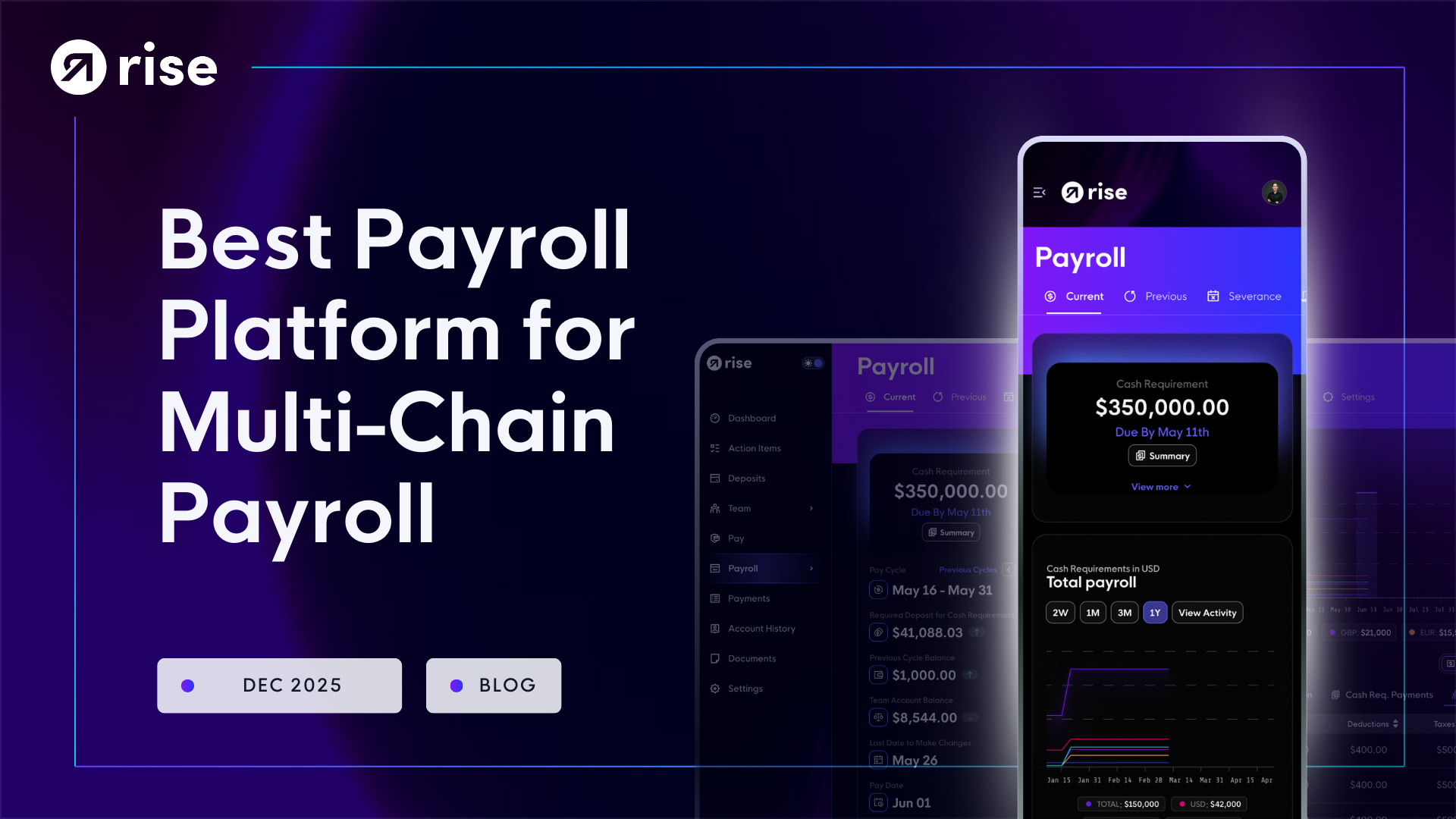In the wake of COVID-19's seismic shifts, we've witnessed a radical reshaping of the digital economy. This transformation has not just altered, but fundamentally rewoven the threads of our societal fabric.
Brick-and-mortar's mantle has been decisively claimed by e-commerce, heralding a new era where digital storefronts are king. Meanwhile, the remote work revolution offers a tantalizing escape from the confines of traditional offices, bringing about a newfound flexibility in how we define our workspaces. In this rapidly evolving landscape, a company's agility in embracing digital integration isn't just a strategy – it's a survival trait, distinguishing the innovators from the dinosaurs. As we delve deeper into this brave new world, it's clear: adaptability is the currency of the realm.
Web3-native companies are particularly well-positioned in this scenario. In general, these entities operate in the digital sphere, without the need for an in-person office or teams based in the same geographical location. They leverage technologies that facilitate digital collaboration and have native payroll systems that include virtual currencies. The ability to bring all business functions online, from hiring to collaboration to payroll, allows these entities to navigate the contemporary landscape of work with more agility and empower their workers with greater flexibility in where they work and how they get paid.
A common practice amongst crypto-native projects is the integration of stablecoins into employee salaries. Using this stable form of on-chain currency allows for greater ease when issuing payroll to a remote and global workforce.
Beyond the efficiency of stablecoins, they represent an important step toward a digitized future.
The Philosophical Standpoint of Stablecoin Payroll
For crypto-native companies, the integration of stablecoin payroll demonstrates confidence in the value and utility of on-chain compensation. When building a project that leverages blockchain technology, applying its many use cases to one’s internal processes shows a deep belief in the value of the ecosystem.
Compensating employees in stablecoins contributes to the growth and stability of blockchain networks. By actively participating in the broadening of stablecoin usage, businesses and individuals become integral contributors to the stability and expansion of the overall infrastructure. This support thus enhances the resilience and efficiency of stablecoin-based payroll systems.
Practical Advantages of Stablecoin Payments for Employees
Receiving wages in stablecoins provides many employee benefits that range from the convenience of an instant and borderless direct deposit into one’s digital wallet to streamlined access to the DeFi ecosystem. With a stablecoin payment, employees can decide if they want to reinvest wages in crypto, hold their earnings in stablecoins, or convert compensation into fiat currency.
For crypto-native companies, giving employees access to DeFi, dApps, and other web3 products is both a commitment to the web3 ethos and a new level of ease unlocked for workers. While many web3 entities such as DAOs have long-standing practices of crypto compensation, stablecoin payroll adoption provides all of the same benefits with reduced risk.
Stable and secure by nature, stablecoins do not possess the same volatility that is associated with crypto. Because they are blockchain-native currencies, if an employee decides to build out their future-proof financial portfolio with the addition of crypto, stablecoins can be seamlessly traded for the desired currency.
Strategic Benefits for Employers
Alongside the advantages that stablecoin payroll adoption provides to employees, it has significant draws for employers as well. One of the primary benefits of holding crypto lies in its inherent economic potential. This can be illustrated by looking at the trajectory taken by Ethereum, which started at $0.31 per ETH in 2014 and as of November, 2023 is now worth over $2,000.
When operating within the crypto space, showing confidence in the future of digital currencies is crucial. If a crypto-native company doesn’t hold part of its treasury in crypto, or provide options for crypto and stablecoin remuneration, it can be read as a lack of belief in one’s own product or services.
On the contrary, by holding a full or partial treasury in digital currencies and providing crypto and stablecoin payout options to employees, a company’s investment in the web3 sector is not only evidenced but their compensation packages are viewed as highly appealing.
As more forward-thinking organizations restructure their payroll systems to accommodate an increasingly digital economy, offering diverse compensation becomes an expectation amongst the tech-savvy workforce. Companies that fail to incorporate stablecoins and crypto into their payout options risk appearing unattractive and antiquated.
Economic Impacts
The total market cap of all stablecoins is currently topping $126 B with their daily trading volume surging to $53 B. As interest in crypto remains high but fears of volatility still represent a deterrent, stablecoins step in as an obvious solution. Because crypto’s value can experience major fluctuations over short periods of time, it is less convenient in the context of daily transactions. Stablecoins thus represent a valuable bridge between fiat currency and crypto; they possess the same security as fiat currency but can be used across web3 protocols like crypto.
As stablecoins become a standard option for wage payments, it can be predicted that they will continue to be integrated into other elements of the financial system. This integration follows on the heels of major companies from Adidas to Best Buy now accepting payments in cryptos such as Ethereum and Bitcoin and stablecoins such as Tether and USDC. With the digital economy in a phase of steady growth and everything from groceries to pet services available online, it is only a matter of time before all digital purchases can be made in virtual currencies.
Addressing Common Skepticism
Despite widespread enthusiasm from the global community, there still exist certain hesitations around the use of stablecoins and crypto. For those who have little interaction with digital currencies, initiating usage can appear daunting. Confusion around their accessibility is a top factor preventing engagement; myths about the difficulty of buying, selling, and trading crypto are still pervasive despite centralized exchanges such as Coinbase bridging the web2 to web3 gap and making this a non-issue.
Similarly, fears around compliance and tax implications can lead to a lack of participation in the web3 ecosystem. While compliance can certainly become trickier when managing a high trading volume on decentralized networks, for the average crypto user, questions of taxation are fairly straightforward.
After UST depegged and eventually crashed in May of 2022, confusion arose and many were left questioning the stability and security of stablecoins. It is important to note the difference between algorithmic stablecoins and fiat-backed stablecoin; unlike fiat-backed stablecoins, algorithmic stablecoins like UST are not backed by actual dollars or assets held in a bank. Instead, they maintain stability by dynamically adjusting the supply of the token based on algorithmic mechanisms, pegging their value to a target asset or a stable price index.
The most widely circulated stablecoins, such as Tether and USDC, are pegged to the value of the USD and have achieved stability through proper collateralization and regulatory oversight.
Successful Examples of Stablecoin Integration
For many individuals in the web3 sector and beyond, stablecoin payments have brought a level of ease, security, and efficiency to payouts. Whether in the case of international freelancers who cannot readily receive fiat payments or employees of web3 companies who want direct DeFi access, stablecoins represent a powerful financial tool.
"Receiving salaries in stablecoins has significantly streamlined the process of integrating funds into the ecosystem," notes Zach Fowler, a Business Development Manager at Rise. "This has also encouraged me to investigate the practical applications of stablecoins in everyday transactions, such as making purchases at retail outlets, settling bills online, and conducting various transactions through my web3 wallet."
For companies, stablecoins are a powerful means of unlocking access to top global talent. In the rapidly digitizing landscape of job marketplaces, stablecoins are key for being able to hire internationally without the restrictions often associated with fiat payments. In regions affected by volatile fiat currencies, such as the Argentinian peso or the Venezuelan bolívar, maintaining a treasury in stablecoins steps in as a top strategy for preserving value.
The sum of these factors contributes to a vision of the future of work where stablecoin salaries are commonplace and their financial acceptance is widespread.
Getting Started with Stablecoin Salaries
For crypto-native companies who have yet to establish options for stablecoin salaries, this must be made a top priority. Sharing information with employees about the myriad of benefits that come with receiving wages in stablecoins is a meaningful way to bring your workforce onboard.
The first step in adopting a stablecoin payroll system is identifying a best-fit payroll solution. Rise is an all-in-one payroll and compliance solution built for web3-native organizations and traditional business alike. Through Rise, companies can fund payroll in the currency of their choice- from a digital wallet or a traditional bank account- and employees can withdraw payouts in 100+ cryptos and 90+ local currencies.
All payments, regardless of whether they are issued in fiat currency or USDC, are automatically routed by Rise into USD to ensure seamless compliance for employers and employees. Once received, employees have the option to withdraw wages in stablecoins directly to a digital wallet.
Learn more today about how stablecoin payments and flexible routing can revolutionize your payroll and provide a secure foundation for global transactions.
















-6Nov2023.jpg)



